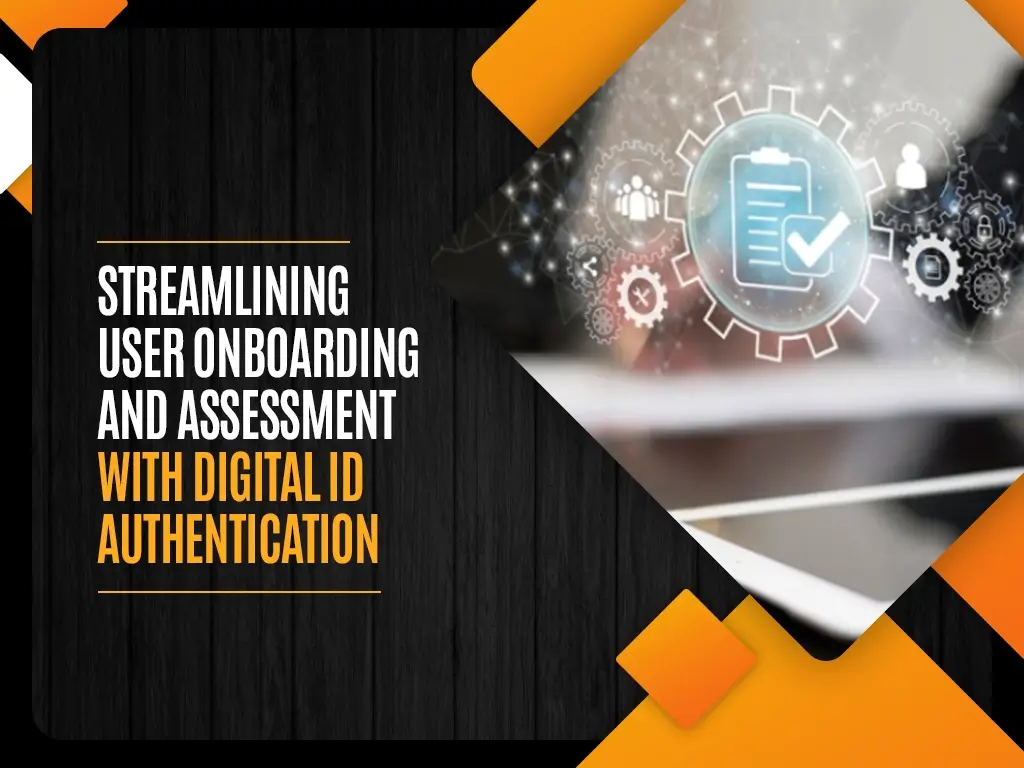Streamlining User Onboarding and Assessment with Digital ID Authentication
Explore the major contribution of digital ID authentication in streamlining the customer’s onboarding process and investigate their assessment through advanced procedures.

Assessing customers’ identity credentials during the onboarding process is essential for streamlining their registration experience. To achieve this, companies should prioritize investment in digital ID authentication solutions, which enable thorough analysis and evaluation of customers’ identity documents. By implementing such authentication solutions, businesses can effectively ward off fraudulent entities from interfering with legitimate operations. Validating the details of customers’ identity documents in depth is important, especially during the initial onboarding phase. Because it serves as a preventive measure against unauthorized individuals gaining access. According to a recent study, the digital identity authentication market is projected to reach a market share of approximately $83.2 billion by 2028.
The Role of OCR Document Extraction Techniques in Enhancing Online Identity Authentication
Digital ID authentication involves verifying and assessing a customer’s identity during their onboarding phase that ensures the authenticity of the provided details. Powered by evolving automated machine-learning models, digital identity validation frameworks conduct thorough examinations of customer identities. The onboarding stage holds significant importance for both businesses and customers, as it determines customer risk profiles.
The efficacy of customer onboarding relies on accurate document and identity evaluations, requiring detailed examination using automated data extraction tools. Optical character recognition (OCR) stands out as the most precise and efficient data extraction tool. Integrating OCR services enhances the user onboarding experience by enabling businesses to extract unstructured information from customer documents effectively. These tools also detect any fraudulent alterations or fabrications in customer documents, ensuring thorough screening of illicit entities during the onboarding process.
Optimizing Onboarding Efficiency: The Major Influence of Authentication of Identity
To improve the onboarding process, businesses should integrate digital biometric facial checks to verify customers’ unique characteristics. A key method to facilitate this for remote customers is through video KYC solutions, which enable facial identity recognition globally. This entails customers participating in video examinations via online platforms, where they submit identity credentials through images. Examiners utilize 3D depth analysis systems to verify facial characteristics against identity documents. Installing biometric identification kiosks in the verification department ensures that only legitimate entities access services.
Strengthening Onboarding Identity Authentication Checks with Enhanced AML Screening
The digital ID authentication process is essential for verifying customers’ identity documents. During onboarding, businesses must intensify their AML screening to analyze and assess customers’ financial activities and risk profiles. These checks determine whether customers are involved in illegal monetary activities. Legitimate customers who pass these checks receive authorization from higher authorities. AML screening thoroughly examines customers’ potential involvement in money laundering and related activities by cross-referencing various lists and documents.
Critical Role of Proof of Address in ID Authentication Online
A successful customer onboarding process requires a thorough investigation of the customer’s proof of address. This involves verifying identity documents such as identity cards, residential documents, tax returns, and passports, which provide proof of address. All enterprises must meticulously examine these address details to ensure customers can be contacted in case of emergencies or illicit activities. This extensive verification process helps mitigate risks associated with potential illegal activities by the customer.
Enhancing Onboarding Across Sectors through Authentication of ID
Effective onboarding strategies using digital verification services are crucial for streamlining various business functions. In the financial sector, these checks automate the onboarding process by thoroughly examining customer identity credentials. Digital ID authentication techniques can also improve the patient onboarding process.
The retail and e-commerce industry benefits from these services as they prevent chargeback fraud and delivery scams. Digital ID authentication systems enhance onboarding procedures across industries by providing real-time results and accurate examinations. These services support business operations by preventing imposters from accessing legitimate products and services.
The Bottom Line
Digital ID authentication solutions are essential for streamlined and effective onboarding procedures. During the onboarding process, businesses should use OCR data extraction tools to thoroughly examine customer identity credentials, which are capable of detecting irregularities in forged documents. Biometric facial recognition checks enhance and expedite the onboarding process by providing a detailed examination of customers’ facial characteristics. AML screening is a vital part of digital ID checks, serving as an effective measure to detect customers’ involvement in illicit activities.



